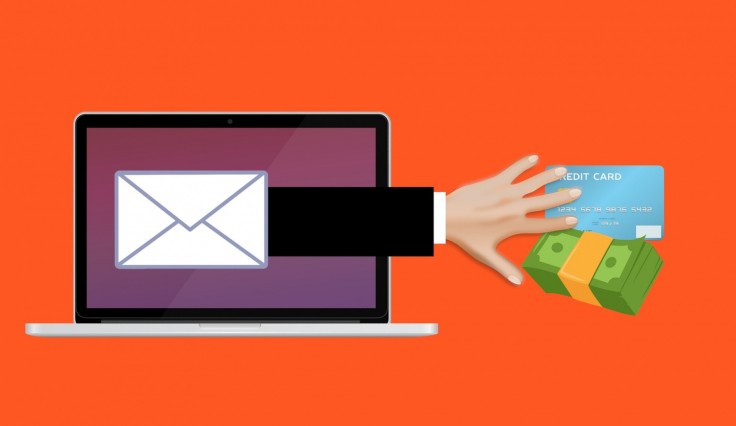
Phishing scams are a growing threat, putting employees and organizations at risk. It's the most common cybercrime, with 3.4 billion spam emails sent daily. In 2021, 83% of organizations experienced phishing attacks, causing 22% of data breaches.
Recognizing and avoiding phishing scams is crucial to creating a secure work environment. But only 1 in 5 organizations provide phishing training once a year. It leaves employees unaware and makes social engineering the leading cause of breaches.
This article explores phishing, how it works, and the scams employees might encounter. You can learn to identify and avoid these schemes by understanding cybercriminal tactics. We'll also share practical tips to help you navigate suspicious emails and websites.
Uncovering the Secrets of Phishing Schemes
Phishing is a prevalent cybercrime. Attackers trick people into revealing sensitive information by pretending to be trustworthy sources.
Phishing scams use sneaky tactics like fake emails and websites to deceive victims. These deceptive messages trick people into sharing personal data or clicking harmful links.
Now, let's look at the different types of phishing scams employees might encounter:
Email phishing. Scammers send fake emails pretending to be reputable companies. In 2022, around 30% of malware breaches occurred through emails containing fake links and attachments.
Spear phishing. 71% of targeted cyberattacks start with spear phishing emails. This targeted approach involves customized messages for specific individuals or groups. Attackers gather personal information from various sources to make messages convincing.
Smishing (SMS phishing). With the rise of mobile devices, smishing has become a threat. Attackers send fraudulent text messages with harmful links or requests for sensitive information. Smishing attacks have increased by a shocking 61%.
Vishing (voice phishing). Scammers make phone calls pretending to be from legitimate organizations. They use persuasion to extract confidential information. Almost 7 out of 10 respondents encountered these attacks, up from 54% in 2020.
Pharming. Attackers manipulate website settings to redirect people to fake sites without their knowledge. This technique aims to collect sensitive information.
Strengthen Your Defense: Identifying and Avoiding Phishing Scams
Phishing scams may appear cleverly crafted. But with keen observation, you can unveil their true nature and shield yourself from their deceitful grasp. Let's explore key strategies for recognizing these scams:
Suspicious Emails
Language flaws and typos. Phishing emails often bear the marks of poor grammar, spelling errors, and punctuation mishaps.
Solicitation of personal or sensitive data. Genuine organizations seldom request sensitive information-passwords, Social Security numbers, or financial particulars-via email.
Urgency and coercive tactics. Phishing emails deploy urgency and threats to coerce recipients into swift action.
Dubious attachments or links. Attachments or links may harbor malware or redirect you to malicious websites.
Counterfeit Websites
Scrutinize the URL. Phishers create fake websites with URLs that resemble legitimate ones. Examine the URL for misspellings, extraneous characters, or unusual domain names.
Seek SSL/TLS encryption. Legitimate websites use SSL/TLS encryption to safeguard data transmission. Look for the reassuring padlock icon in the browser's address bar or ensure the URL begins with "https://."
Verify website authenticity. Use search engines or navigate to the organization's official website instead of clicking on email-provided links.
Safeguarding Against Deceptive Phishing Tactics
By implementing the following strategies, you fortify your defenses against these attacks and safeguard your valuable information:
Harness the power of password managers.
Advocate for the use of secure and unique passwords. Discourage the use of guessable information like birthdates or pet names.
Embrace the benefits of password managers. These tools remove the need to remember multiple passwords. It reduces vulnerability to phishing attacks.
Activate two-factor authentication (2FA). It adds an extra layer of security, demanding a second form of verification (e.g., a temporary code sent to a mobile device) alongside the password.
Exercise caution in email interactions.
Steer clear of suspicious links and attachments. Hover your cursor over links to preview the URL before clicking on them.
Verify email sender identities. Beware of subtle deviations or misspellings that might signify a phishing ploy.
Double-check email addresses. Confirm the actual email address associated with the sender to ensure authenticity.
Educate and empower employees.
Instill phishing awareness through training. Conduct training sessions to enlighten employees about phishing techniques, warning signs, and best practices for email and online security.
Use simulated phishing exercises. Test employees' preparedness by simulating phishing scenarios. It reinforces their training and exposes areas that may need more attention.
Safeguard office management tools.
Select reputable software providers. Opt for trusted providers of office management tools like Flanco. Investigate their security protocols, encryption standards, and data protection practices.
Keep software up to date. Update and patch your office management software to benefit from security enhancements. These updates often address vulnerabilities that attackers exploit.
Implement stringent access controls. Strong access controls ensure that only authorized personnel can access sensitive information.
Phishing can have serious consequences like financial losses and damage to reputation. By following the tips, you can reduce the risk of being targeted. Stay aware and educate yourself and your colleagues about phishing threats.









